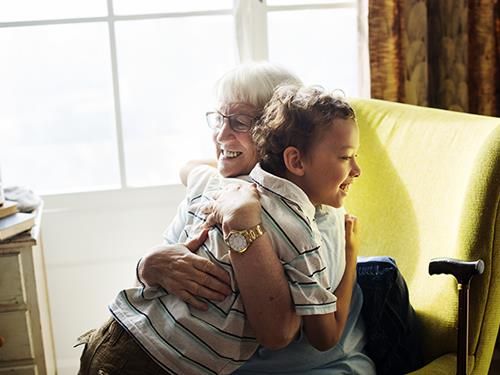Support Bubbles: What you need to know

On Wednesday 10 June, the UK Government announced a change to the guidance around COVID-19 in England. They introduced ‘support bubbles’ to help lonely or isolated people who have been most impacted by the social restrictions.
We’ve broken down what the new guidance on support bubbles means for you.
What are support bubbles?
If you live by yourself or are a single parent with dependent children (there is only one adult in your home), you are now able to expand your support network to one other household of any size.
This is called making a support bubble, and means that you can meet indoors or out, be less than two metres apart, and stay overnight.
It is important to form a support bubble safely.
- Support bubbles must be exclusive - you should only form a bubble with one household and they should only be in a bubble with you. You should not change who is in your bubble, or have close contact with anyone else you do not live with.
- You do not need to stay more than two metres from people in your bubble, but good hand hygiene and other measures can help to keep you and the people you meet safe.
- If you or someone in your support bubble is showing symptoms of COVID-19, or otherwise self-isolating, everyone in your support bubble should stay home. If you or a member of your support bubble is contacted as part of the test and trace programme, the individual contacted must stay at home. If the individual becomes symptomatic, everyone in the support bubble must then isolate.
- You should continue to adhere to social distancing guidelines in full with other households.
- There is no limit on how far you can travel to meet members of your support bubble, but advice is to form a support bubble with someone who lives locally wherever possible. You cannot form a bubble with someone who lives in Scotland, Wales or Northern Ireland.
Note - it is not yet possible for those who are not in a support bubble to start meeting inside other people’s homes. That remains against the law, unless covered by any other limited circumstances as set out in the law.
Support bubbles if you are clinically vulnerable
Current advice for people who are clinically extremely vulnerable, and have been shielding, is to not form a support bubble. Those who are shielding are still advised to maintain strict social distancing and stay 2 metres apart from others – including those they live with.
More advice for this specific group is expected soon.
If you are clinically vulnerable, or have a higher risk of catching COVID-19 (such as a frontline healthcare worker), you should continue to take particular care to minimise contact with others.
You should bear this in mind when deciding to form a support bubble, but you are able to do so.
Children and support bubbles
Children with separated parents are already permitted to move between both households and there is no change to that. The new guidance around support bubbles also allows for those households – if there is only a single adult in them – to form a support bubble with another household.
However, if someone in any of these linked households shows symptoms of COVID-19, or is otherwise self-isolating, you should all stay at home.
Childcare
Lone parents can now form a support bubble with another household to provide informal (i.e. unpaid) childcare for them, or for them to provide childcare for you.
This does not apply if your child is over the age of 18 and living with you.
We will continue to update you on the latest government advice on COVID-19, but do check the gov.uk website in the first instance for the most up-to-date information. The NHS website has detailed information on symptoms and what to do if you or someone in your household shows signs of COVID-19 symptoms.
15th June 2020